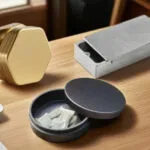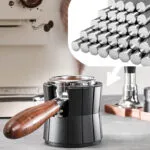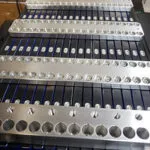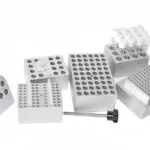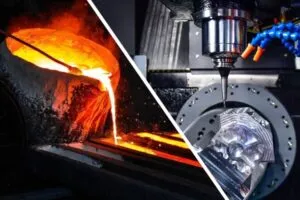The polishing finish is key in the CNC machining process. It makes metal parts look better and work better. This method removes flaws, scratches, and oxidation, leaving a smooth, shiny surface.
For CNC machining, especially with steel and stainless steel, a top-notch polish is crucial. Knowing about polishing is important for those interested in machining and CNC manufacturing.
What is Polishing in the Finishing Process?
Polishing is a key step in the finishing process, especially for CNC machined parts. It uses abrasive materials to make the surface smooth. This reduces roughness and improves clarity.
A good polishing process can make parts look better and last longer. It’s a crucial part of making products look and feel their best.
Machining manufacturers need to know about different polishing methods. Each method can produce different results. Choosing the right one is important for quality.
This knowledge is especially important for companies that do CNC machining. It helps them make products that meet customer needs.

How does it work?
The polishing process has several stages, each important for a perfect finish on metal. Knowing these steps helps improve the polishing technique. This makes the final product better.
Roughing
Roughing is the first step. It removes big imperfections and rough edges. Coarse abrasives are used to fix deep scratches and uneven areas. This stage is key for a smooth surface for the next steps.
Polishing
After roughing, polishing comes next. This uses finer abrasives to make the surface even smoother. A good polishing makes the material look smoother, ready for the next step.
Brightening
Brightening is the next important step. It makes the surface shine by removing dullness. This step not only makes the surface look better but also protects it.
Protecting
The last step is protecting. A sealant or coating is applied to prevent damage. This keeps the polished finish looking good for longer. Spending time on these steps leads to better results and a lasting product.

Surface Finish Classification
Understanding the different polishing finishes is key to getting the right look in various projects. There are three main types: rough polishing, semi-polishing, and mirror polishing. Each has its own purpose and level of shine.
Rough Polishing
Rough polishing is the first step in preparing a surface. It gets rid of big imperfections and rough spots. This makes it easier for finer polishing to follow.
This step is crucial for the next polishing phases to work better. It helps in achieving a smoother finish.
Semi-Polishing
Semi-polishing offers a middle ground between rough and mirror finishes. It gives a decent shine and is good for parts that need to look nice but not too shiny. It’s often used in industrial parts or machinery.
This method balances looks and function well. It’s perfect for where beauty is important but not the main goal.
Mirror Polishing
Mirror polishing creates the most reflective surface. It’s mainly for looks, making it great for jewelry and fancy metal pieces. The shiny surface adds luxury and grabs attention.
What are the Different Types of Polishing?
Knowing the different polishing techniques is key to getting the right finish on various materials. Each method has its own benefits for specific uses. We’ll look at four main types: mechanical, chemical, electrolytic, and vibratory polishing.
Mechanical Polishing
Mechanical polishing uses abrasives and physical force to smooth out surfaces. It’s used in many fields, like metalworking and manufacturing. This method removes scratches and imperfections, making it a top choice for machining.
Chemical Polishing
Chemical polishing uses special chemicals to improve material surfaces. It removes a thin layer through chemical reactions, creating a polished finish without harsh abrasives. It’s great for complex shapes and boosting corrosion resistance, making it useful in many areas.
Electrolytic Polishing (Electropolishing)
Electrolytic polishing, or electropolishing, uses an electrochemical process for a high-quality finish. It removes a few microns from the surface, leaving it bright and smooth. This method is perfect for precise finishes, especially in medical and food processing where cleanliness is essential.
Vibratory Polishing
Vibratory polishing involves parts in a vibrating bowl with abrasive media. It’s great for polishing many items at once, making it ideal for large-scale production. The vibration ensures even polishing, saving time for small to medium parts.
What Metals Can Be Polished Finishing?
Many metals can be polished to look better and work better. Metals like aluminum, brass, copper, and stainless steel are common choices. CNC steel is especially good because it’s strong and lasts long, perfect for polishing.
Machining stainless steel is known for its shiny finish. This finish not only looks great but also protects against rust and stains. It’s a top pick for those who want both beauty and durability.
Knowing which metals can be polished helps makers choose the right ones. This ensures their projects have top-notch finishes.
What are the Pros and Cons of Polishing?
Polishing offers many benefits of polishing that can greatly enhance the look and quality of materials. It makes things look better with a shiny finish. It also makes surfaces last longer by preventing corrosion.
For stainless steel, a polished surface is key for cleanliness. Polishing can also make things work better by reducing friction. This means they can perform more efficiently.
However, there are downsides to polishing. It can take a lot of time and cost more because of the special tools needed. If done wrong, it can damage the material or remove too much of it. Knowing these points helps manufacturers decide if polishing is right for their projects.
How Do I Choose the Right Polishing Technique?
Choosing the right polishing technique is key to the quality and look of your metal parts. Consider the metal type, the finish you want, and how the parts will be used. Each metal reacts differently to polishing, so knowing your material is crucial.
Also, think about how many items you need to polish and if you’re in a hurry. For lots of items, mechanical polishing is faster and better for big batches. But for delicate items needing a perfect finish, electropolishing is best. It gives a smooth, corrosion-resistant surface.
By considering these points, you can pick the best polishing technique and service for you. This ensures your metal products look great and last longer.

